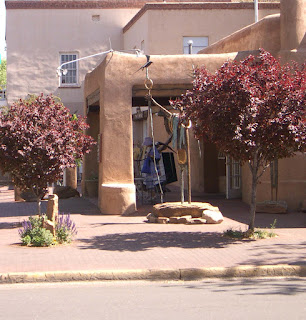 |
| School Visit |
“The longer you put off getting serious about writing, the longer you put off success. Procrastination is a writer’s biggest enemy.” — Barbara Seuling

 |
| School Visit |
“The longer you put off getting serious about writing, the longer you put off success. Procrastination is a writer’s biggest enemy.” — Barbara Seuling
 |
| San Jose Rose Garden |
 |
| School Visit |
“A journal can be an invaluable tool for recording ideas, impressions, and anecdotes for future use. It can also help your career by instilling in you the habit of writing regularly.” – Writer’s Digest Weekly Planner
 |
| San Jose Rose Garden |
“This morning I took out a comma, and this afternoon I put it back again.” — Oscar Wilde
 |
| Santa Fe |
“We don’t write what we know. We write what we wonder about.”–Richard Peck
 |
| School Visit |
 |
| Library |
“The best children’s book writers are not people who have kids, but people who write from the child within themselves.” Andrea Brown
Since April is Poetry Month, I would like to post a couple of my poems. These were published a while back.
By Lupe Ruiz-Flores
Award-winning author Jane Yolen offers tips on writing a poem on Katie Davis’ blog.
“Love the writing, love the writing, love the writing… the rest will follow.” Jane Yolen
“If a teacher told me to revise, I thought that meant my writing was a broken-down car that needed to go to the repair shop. I felt insulted. I didn’t realize the teacher was saying, ‘Make it shine. It’s worth it.’ Now I see revision as a beautiful word of hope. It’s a new vision of something. It means you don’t have to be perfect the first time. What a relief!” —Naomi Shihab Nye